Search Images
Browse Content (p. 1153)
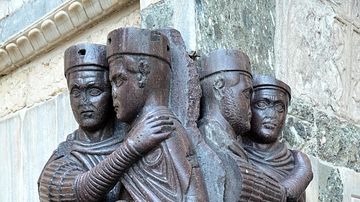
Image
Portrait of the Four Tetrarchs
Porphyry sculpture portraying the four Tetrarchs (Diocletian, Maximianus, Galerius and Constantius Chlorus) embracing. It is dated to c. 300 CE and was sculpted in Asia Minor. It probably originally decorated two separate pillars in Constantinople...
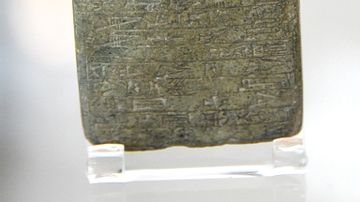
Image
Foundation Tablet of Amar-Seun from Ur
This is a stone tablet, inscribed with a cuneiform text. This was a dedication to the Temple of Nanna at Kar-Zida of Ur, by Amar-Seun (Amar-Sin). Amar-Seun was king of Ur III dynasty. From Southern Mesopotamia, modern-day Iraq. Neo-Sumerian...
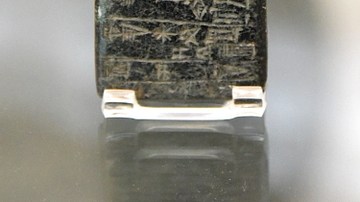
Image
Foundation Tablet of Ammar-Seun from Girsu
This is a stone tablet, inscribed with a cuneiform text. This was a dedication to the Temple of Inanna at Girsu by Amar-Seun (Amar-Sin). Amar-Seun was king of Ur III dynasty. From Southern Mesopotamia, modern-day Iraq. Neo-Sumerian Period...

Image
Votive Mace Head of Shulgi
This marble votive mace head was inscribed with a cuneiform text. The text says that this mace head is a dedication on behalf of Shulgi, a king of Ur III, to the god Meslamtaea, or Nergal. From Mesopotamia, modern-day Iraq. Neo-Sumerian Period...
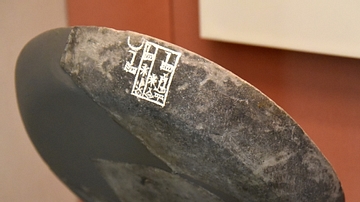
Image
Stone Plate of Enmahgalanna from Ur
This is a polished grey stone, which was probably an offering stand. The name (and title) of "Enmahgalanna" appears and is repeated unusually with a pictogram of the moon's crescent (instead of using the pertinent cuneiform sign). Enmahgalanna...
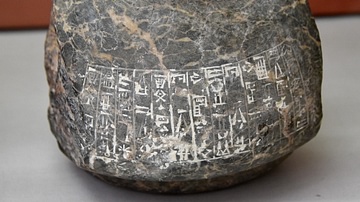
Image
Votive Mace Head of Ur-Ningirsu II from Girsu
This grey stone mace head was inscribed with a cuneiform text. The text says that this mace head was dedicated to the god Ningirsu by Ur-Ningirsu II (son of Gudea, ruler of Lagash). From Girsu, Sothern Mesopotamia, modern-day Iraq. Circa...
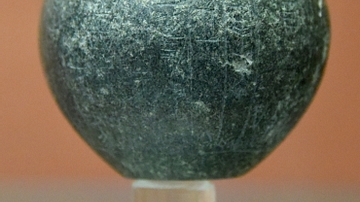
Image
Votive Mace Head from Lagash
This mace head was inscribed with a cuneiform text. The text says that the mace is dedicated to the god Kindazi by the lady Ninkagina, both on her own behalf and that of Nam-mahani, who was a king of Lagash. The mace head itself has a name...
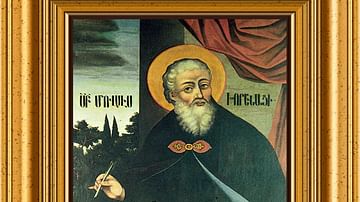
Image
Movses Khorenatsi
Movses Khorenatsi (Moses of Khoren) who was a 5th century CE Armenian historian whose work the 'History of the Armenians' has earned him the title of the “father of Armenian history”.
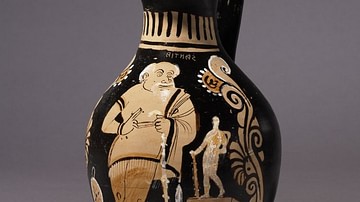
Image
Xanthias from 'The Frogs
A red-figure vessel depicting Xanthias, the slave of Dionysos in the 405 BCE Greek comedy play 'The Frogs' by Aristophanes. Mid-4th century BCE, Campania. (British Museum, London)
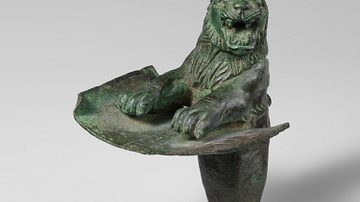
Image
Hurrian Lion Foundation Peg
Cast in copper alloy, this Hurrian foundation peg dates to circa 2200-2100 BCE. It measures 11.7 cm high x 7.9 cm wide. Artist unknown, from Syria. (Metropolitan Museum of Art, New York).